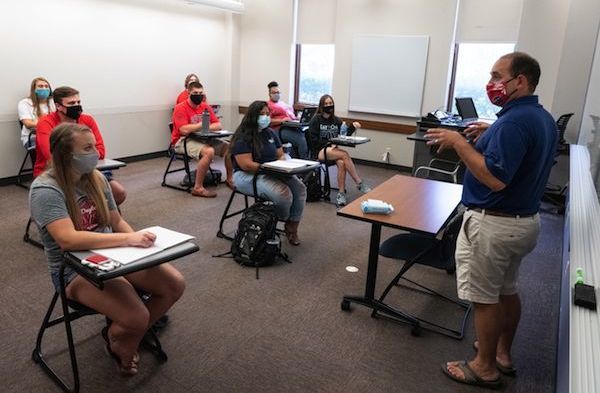President's Blog: From the Heart

5 Flexible Teaching Tips
(Professors Julia Randel, Randy Sparks and Shannon Driskell served on a University of Dayton academics working group that developed a highly flexible approach for educating students during an unpredictable time. In a LinkedIn article, they offer five tips for faculty.)
The uncertainty surrounding teaching in a pandemic has prompted calls for faculty on campuses across the nation to be “flexible” in their teaching. In many respects, the call for flexibility may only add to that uncertainty. What does flexible teaching mean in practice? What does flexibility mean in preparation? These are important questions, and we hope these five tips provide some food for thought as we venture into the great unknown facing us in the fall and perhaps beyond.
- Stay focused on course learning objectives. What should students have learned after completing your class? These objectives serve as your metaphorical destination. Like taking any trip, you may encounter roadblocks and traffic jams that force you to change routes. Flexible teaching is no different. Learning students may have accomplished with an in-class exercise might be accomplished equally well through a case completed remotely. Look at each learning objective and take stock of the different ways it can be achieved in different contexts.
- Determine what students need to be successful. We know that students need their instructor to guide them through content, scaffold their thinking, facilitate discussions, and provide feedback. Students need their peers to share and respond to ideas, and to form a learning community. Keeping in mind what students need to be successful in meeting the course objectives, determine how best to facilitate the content. To help students prepare for discussion or master a concept, a prerecorded lecture or video may be ideal. If you want to engage students with challenging questions, you may need the ability to read facial cues and respond in the moment, which only synchronous or in-person instruction can provide.
- Learn the necessary technology. Notice the qualifier, “necessary.” You don’t need to learn every available technology. Focus on what helps you and your students most to accomplish your course learning objectives. Taking stock of the available technology would be useful; we don’t know what we don’t know. However, resist the temptation to completely remake your courses to incorporate a flashy new tool. Start with the wealth of resources and training available. At the University of Dayton, we’ve developed a “Keep Teaching” website to help faculty prepare.
- Let your students help you! You do not have to prepare every class session or topic before the semester begins. It’s wise to stay at least two weeks ahead of what’s actually being facilitated but preparing too far in advance may be restrictive. As conditions change, call on your students for feedback. Under certain circumstances, would an essay be more effective than a presentation, for example? Seeking student input and perspectives can be a powerful way to give them a sense of ownership and control and recognizes that they face at least as many uncertainties as we do.
- Provide structure and routine. Structure and routine do not exclude flexibility. After our hard pivot to emergency remote teaching in the spring semester, students commented on their appreciation for courses that had a weekly routine. Routine combats uncertainty and unpredictability. Many useful routines transfer easily from classroom to online settings. For example, at the University of Dayton we use a flexible learning management system for retrieving and submitting assignments, setting schedules, and communicating about course-related matters. No matter the setting, establish patterns and norms of communication that students recognize.
Remember, you’re not alone. On our campus and campuses across the country, faculty face similar questions about teaching in the midst of uncertainty. Call on your creative colleagues, on your own campus and beyond, for their help and their ideas. Don’t overwhelm yourself with the abundance of information available, and don’t compare yourself to the people who seem to have it all figured out.
The most effective teaching doesn’t necessarily depend on having the fanciest course website or the flashiest videos. Just like us, our students are coming back to campus hungry for the intellectual and human connections we find in the classroom. It takes a different kind of work to cultivate these across face masks and zoom screens, but embracing flexible teaching shows our students we care about them and their learning. The more we can model flexibility in our teaching, the more our students will embrace flexible learning.
